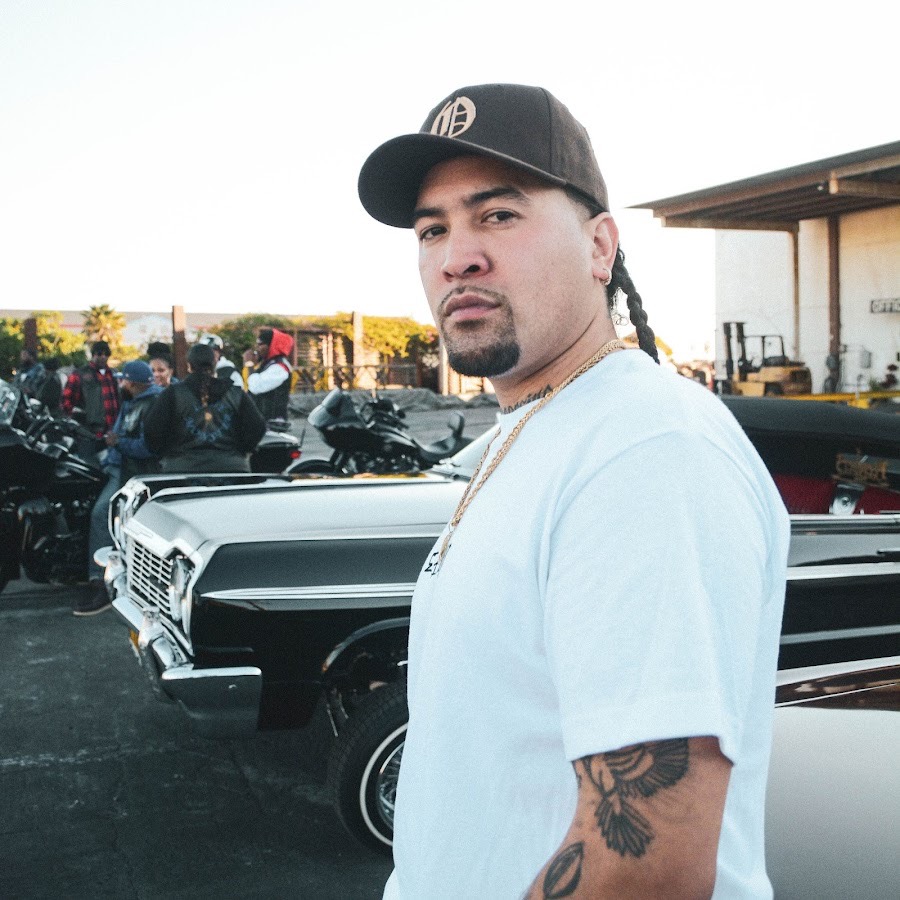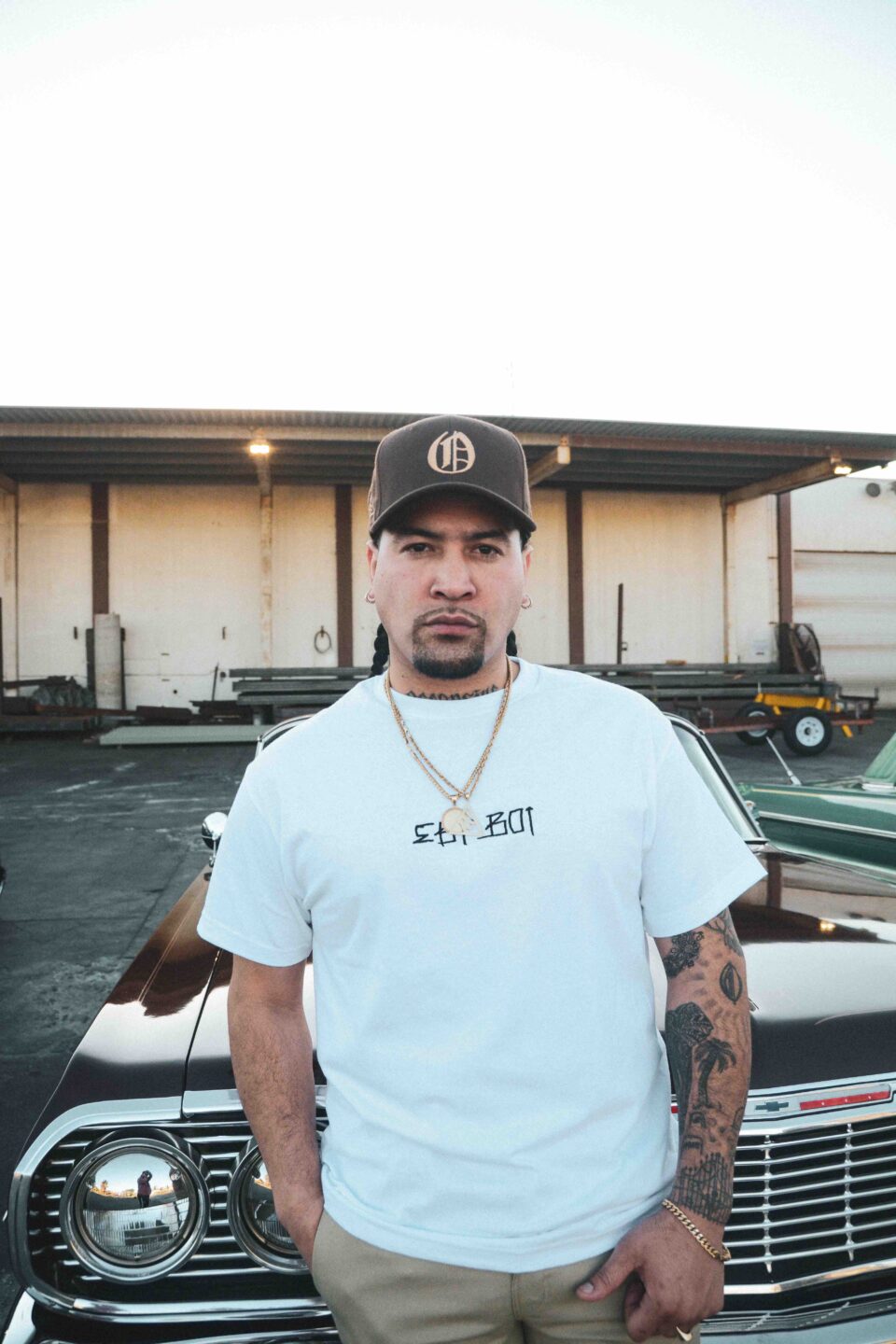Since the late-’80s, West Coast rap has used classic funk as the foundation for some of its most popular tunes. Seminal songs from artists like Parliament, Funkadelic, and Roger Troutman can be found in the DNA of classic recordings from Eazy-E, N.W.A, Ice Cube, and countless others. Rising rapper Dezzy Hollow knows this and opted to craft his new album One Nation Under the Funk in the same vein.
Bringing contemporary slang and an energized approach to the 15-cut project, Dezzy pushes the sound in a new direction, telling modern stories over familiar grooves. As another nod to California’s rap heritage, he teams with such veteran acts as WC and Suga Free on One Nation, showcasing some of the region’s most respected but under-recognized heroes.
In our Q&A, Dezzy Hollow discusses revisiting classic tracks in his material, leaning into funk, and the importance of staying active as an independent artist.
With One Nation Under the Funk, and generally speaking, it seems as if you have an overall positive vibe. How did that end up being the main thing you ride with musically?
I’d always listened to funk growing up and I had a funk influence in my music. About four years ago I started to really take funk seriously. I’d already been making music for a while, but I stepped into the funk genre because it resonated with me. I’d always made funk, but I never went all out and made a full album of just funk. So I decided to do that four years ago and just tested the waters [with Can U Handle the Funk].
It did really well, so then I put together One Nation Under the Funk, and I reached out to a couple artists that are OGs in the game that I've listened to since I was a kid. I got a couple of them on the album. From there, I just sprinkled my sauce on it. It created this nostalgic, old-funk, twisted sound with this new-age type of style. It's something that you don't really hear anymore, so it's a style that I'm definitely gonna keep creating.
“I stepped into the funk genre because it resonated with me. I’d always made funk, but I never went all out and made a full album of just funk.”
On “Bounce,” the track that features WC, you say you used to ride just to get up out the house. Even before COVID, I would often think back to when I was growing up and people were always outside, especially kids. Now, I rarely see kids outside when I drive down the street. What made you say that on “Bounce?”
I'm really reminiscing about the days of being young and facing the adversity of just growing up in a neighborhood that had a heavy influence in my upbringing. Like you said, there's a lot of things that were happening outside that you would only know about if you were outside. Right now, I do feel like I don't see as many people outside at the park. I don't see that many people walking. I don't know if it's due to COVID or if it's due to the internet, people on their phones. We used to have barbecues. We used to do a lot of things out in the streets, but now it seems like a lot of people are gravitating toward just seeing it on their phone and on social media more than being out there and being active. So “Bounce” is a reminiscent song of how we used to be when things were very exciting and very dangerous.

One of the lyrics on “Play” is, “You’re treating this like a scrimmage / I’m treating it like it’s the playoffs.” What was going through your head when you were crafting that lyric?
That’s a very fun song, but at the same time, I’m spiting some real ism on there. That bar particularly is not boasting, but it’s telling people that I do this every day. This is my career. I don’t take days off, especially being an independent artist. I have to do this every day. I have to be consistent with my videos. I have to keep releasing material. I eat, sleep, and breathe music in order to be a successful independent artist. I feel like some people are only halfway in this thing and then halfway out. I'm 100 percent in, and I speak it through my music.
“I eat, sleep, and breathe music in order to be a successful independent artist. I feel like some people are only halfway in this thing and then halfway out. I'm 100 percent in, and I speak it through my music.”
Also on “Play,” you play off of Tha Dogg Pound’s “Let’s Play House” on the chorus. What gave you that idea?
My whole album, from top to bottom, has a lot of influence in terms of the melodies of songs that I’ve listened to and studied. I just twisted it, took the melody, added some different lyrics here and there. On “Play,” I used some of the lyrics from “Let's Play House” mainly because that’s one of my favorite songs and I wanted to twist it in a different way. So I put it on a different type of funk. That song's actually almost pop-funk, so I twisted it and made it my own thing.
Since you referenced playing off other songs, on “Another Day at Work,” I was surprised you had that “I’m Still #1” by Boogie Down Productions reference in there alongside nods to Biggie and Puffy. Why did that sample appeal to you?
Ultimately we based that song off the bassline, which came from [Vaughan Mason & Crew’s] “Bounce, Rock, Skate, Roll.” When we were creating “Another Day at Work,” I wanted to twist that song with some of Biggie’s lyrics. I don't know why, that’s just how my mind works. I really like twisting songs that you would never think would be put together. So I put influences from both of those songs together and then I started writing.
The most important thing about that song is that I kept it very simple. A lot of times I add bridges, I do flow switches, and a bunch of extra stuff for my songs. But for that one, I just kept a straight, calm type of flow throughout the whole thing. The hook was very simple. There weren’t any stacks. It was just quick and it repeated. Every song is different, and this one definitely has a cruising, laidback type of feel to it. I wanted to keep that sound throughout the whole song instead of flow switches and all that.
This isn’t as much about a flow change as it is a feel change, but the song “Shoulders” has a much harder beat than a lot of One Nation. I appreciated how that shows your versatility.
I think this album was very important for me to showcase that I can still do funk, but I could also sprinkle a little bit of that boom-bap flow in there because the project isn’t fully funk. It’s a twist of lyrical trap and funk put together. I definitely had to show my versatility, and this pretty much had to be my greatest body of work. Of course, you wanna elevate every project you put out. I got some solid features on it. I got some dope production. Let me see what I can do with my lyrics.
“I don’t know why, that’s just how my mind works. I really like twisting songs that you would never think would be put together.”
Then with the song “Creep It,” one of the things I thought was interesting was that you had the people in the video taking the bus. Since so much of modern rap is about flossing and having all kinds of stuff, why was that something that you wanted to show in the video?
A lot of my videos are just painting a picture of me and how I used to be growing up. When I was a teen, when I would go out or meet up with a sneaky link, I would always take the bus. For the video, we wanted to create a day of two youngsters figuring out a way to meet up after they just met each other once. The public transportation, we really wanted to throw that in to make it seem authentic. Them going on the bus on the first date and then going to get some Mexican food, that’s some real West Coast shit. FL








